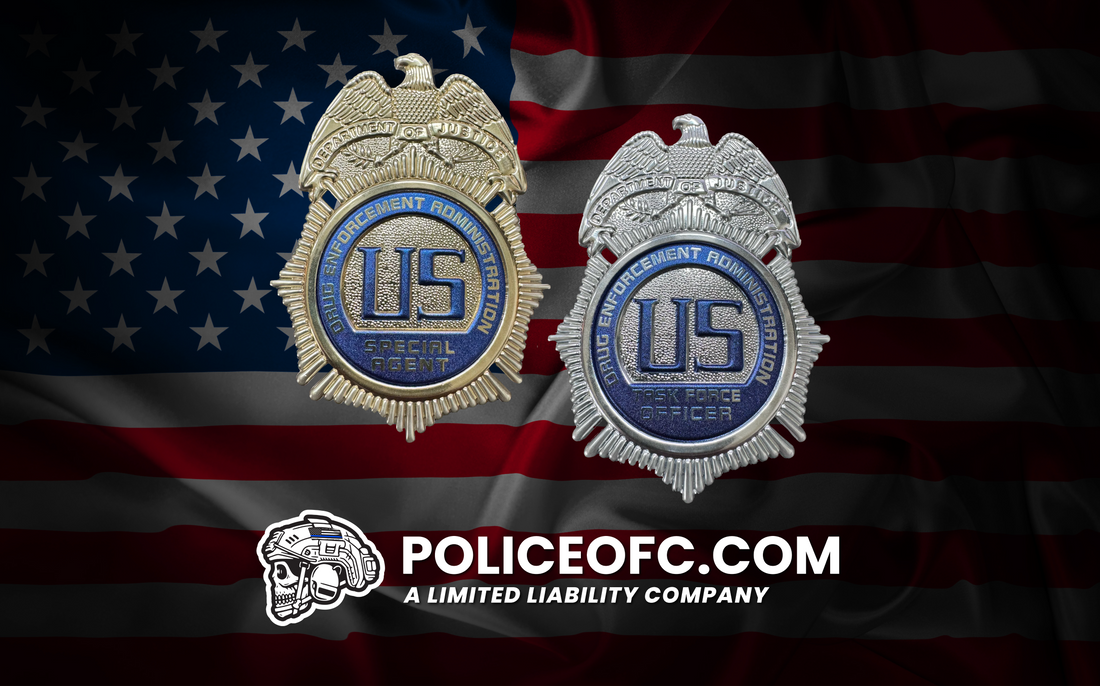
The DEA Badge: History, Honor, and What It Means to Wear It
The DEA Badge: History, Honor, and What It Means to Wear It
In federal law enforcement, a badge is more than just a symbol — it’s a statement of mission, integrity, and sworn duty. For agents of the Drug Enforcement Administration (DEA), the badge they carry represents not only their authority but their dedication to fighting the global drug trade and protecting American communities.
Let’s explore the history, significance, and earned honor of the DEA badge, including how it applies to DEA Task Force Officers (TFOs) and why it continues to be a powerful emblem in federal law enforcement.

The History of the DEA Badge
The DEA was established in 1973, consolidating several federal drug enforcement agencies into one powerful entity. With its creation came the need for a distinctive badge — one that would be recognized by law enforcement agencies worldwide and carry the weight of federal authority.
Inspired by traditional law enforcement designs, the DEA badge features a gold eagle, Department of Justice insignia, and clear markings of the agency’s name. The layout communicates both authority and professionalism — a standard design among federal investigative agencies.
Today, the badge remains largely unchanged, standing as a powerful symbol in the fight against illicit drugs, cartels, and trafficking networks.

Earning the DEA Badge
Becoming a DEA Special Agent is a rigorous process. Candidates must:
- Pass written assessments and physical fitness tests
- Complete a background investigation and medical exam
- Attend a demanding Basic Agent Training Program at the DEA Academy in Quantico, Virginia
Only upon successful completion of the academy do trainees receive their official DEA badge and credentials — marking the moment they officially become DEA Special Agents.
Do DEA Task Force Officers Get Badges?
DEA Task Force Officers (TFOs) — local or state law enforcement officers assigned to work alongside DEA agents — do not receive the official federal DEA badge. However, they are deputized and may carry task force credentials that identify them as acting with DEA authority during their assignment.
While they don’t carry the gold badge of a DEA agent, their role and recognition are critical — and deeply respected within the agency.

What the DEA Badge Means
For DEA Special Agents, the badge is more than just metal — it's a constant reminder of the lives lost to the opioid epidemic, the communities ravaged by methamphetamine and fentanyl, and the fight against transnational criminal organizations.
It symbolizes:
- Accountability and justice
- Courage in the face of danger
- A national mission to safeguard public health and safety
Honor the Badge – Gear That Represents
If you’re a current or retired DEA professional — or a supporter who respects the mission — you can display your pride with DEA Flex Badges with Velcro. These flexible metallic patches (available at PoliceOfc.com) offer a professional, secure, and tactical alternative to displaying your credentials without risking loss or damage to your official badge.
Browse high-quality DEA gear, including badges and tactical patches, at PoliceOfc.com — trusted by law enforcement professionals nationwide.

In Conclusion
The DEA badge carries with it decades of history, hard-earned honor, and a commitment to justice. Whether it’s a Special Agent or a Task Force Officer working under the DEA banner, the badge — and what it represents — unites them in one of the most critical missions in federal law enforcement.
For more on the DEA's mission and career opportunities, visit DEA.gov. And for trusted, field-tested tactical gear and badges, head to PoliceOfc.com today.


1 comment
Id like solid gold bage carved out it look the best